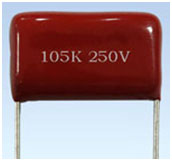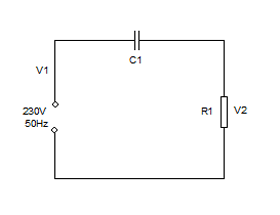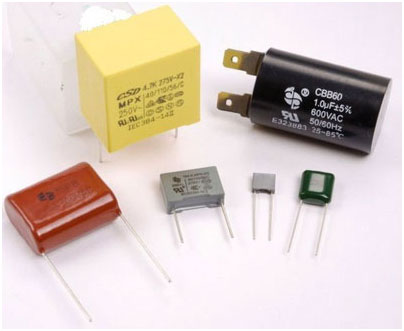Circuit designers are now experimenting with capacitor based power supply due to its low cost and light weight features. Unlike resistive type power supply, heat generation and power loss is negligible in capacitor power supply. But there are many limitations in capacitor power supply. It cannot give much current to drive inductive loads and since it is connected directly to mains, capacitor breakdown can damage the load. Moreover, there is the risk of shock hazards, if handled carelessly. 
Fig. 1: Image of a Capacitor
If properly designed and constructed, the capacitor power supply is compact, light weight and can power low current devices. But before selecting the capacitor, it is necessary to determine the current that can be supplied by the capacitor. This note will help you to calculate the current in AC capacitor.

Fig. 2: Circuit Diagram For Registor and Capacitor Connection

Fig. 3: Image showing Different types of Capacitors

Circuit Diagrams
Filed Under: Electronic Projects



Questions related to this article?
👉Ask and discuss on Electro-Tech-Online.com and EDAboard.com forums.
Tell Us What You Think!!
You must be logged in to post a comment.